
Gyotaku prints
printed and drawn 2016-2025
Gyotaku (魚拓), meaning "fish impression" in Japanese, is a traditional printing technique that dates back to mid-19th-century Japan. It was originally used by fishermen to document their catches—long before smartphones—by applying ink to the fish and pressing it onto paper. The result was a detailed, life-size print—visual proof of the one that didn't get away.
As a devoted fisherman, I got into gyotaku after a suggestion from my mother-in-law. She joked that instead of always showing fish photos on my phone, I should make prints—this way, the size would be there for all to see, with no room for exaggeration. Fair enough.
I started by printing cleaned fish heads and skins in pieces. Eventually, I began inking whole fish directly and taking full-body impressions as it was traditionally done. Over time, I grew restless with the traditional method and began drawing over the prints, turning them into paintings where the fish became both fact and fantasy.
What fascinates me most about gyotaku is how each print, even from the same fish, turns out unique. The choice of paper—especially crinkled or wrinkled—can give the image a fossil-like texture, adding an ancient, almost geological feel to a freshly caught creature.
And yes—every fish you see here was eaten afterward, respectfully and completely. Nothing goes to waste.










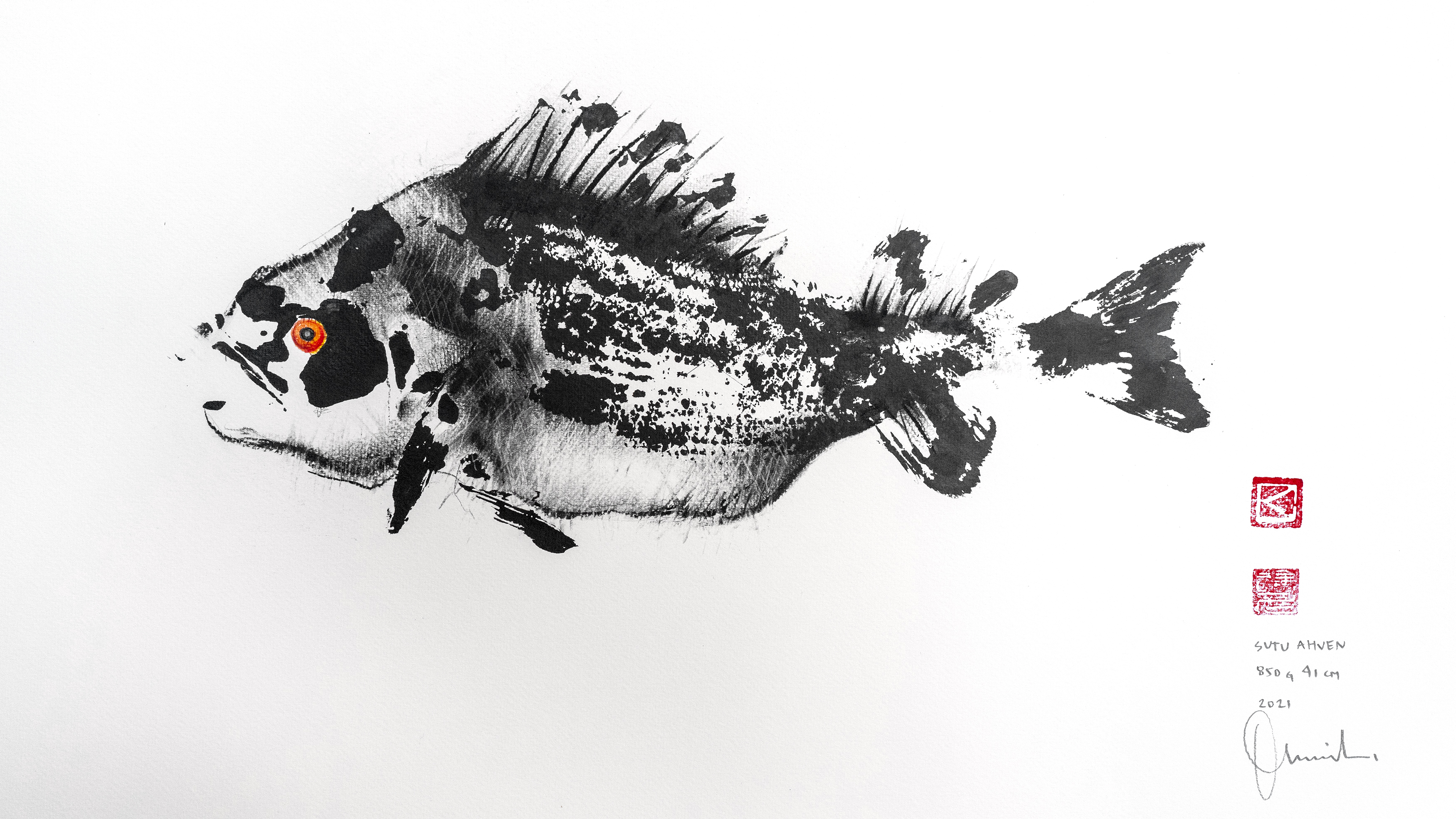

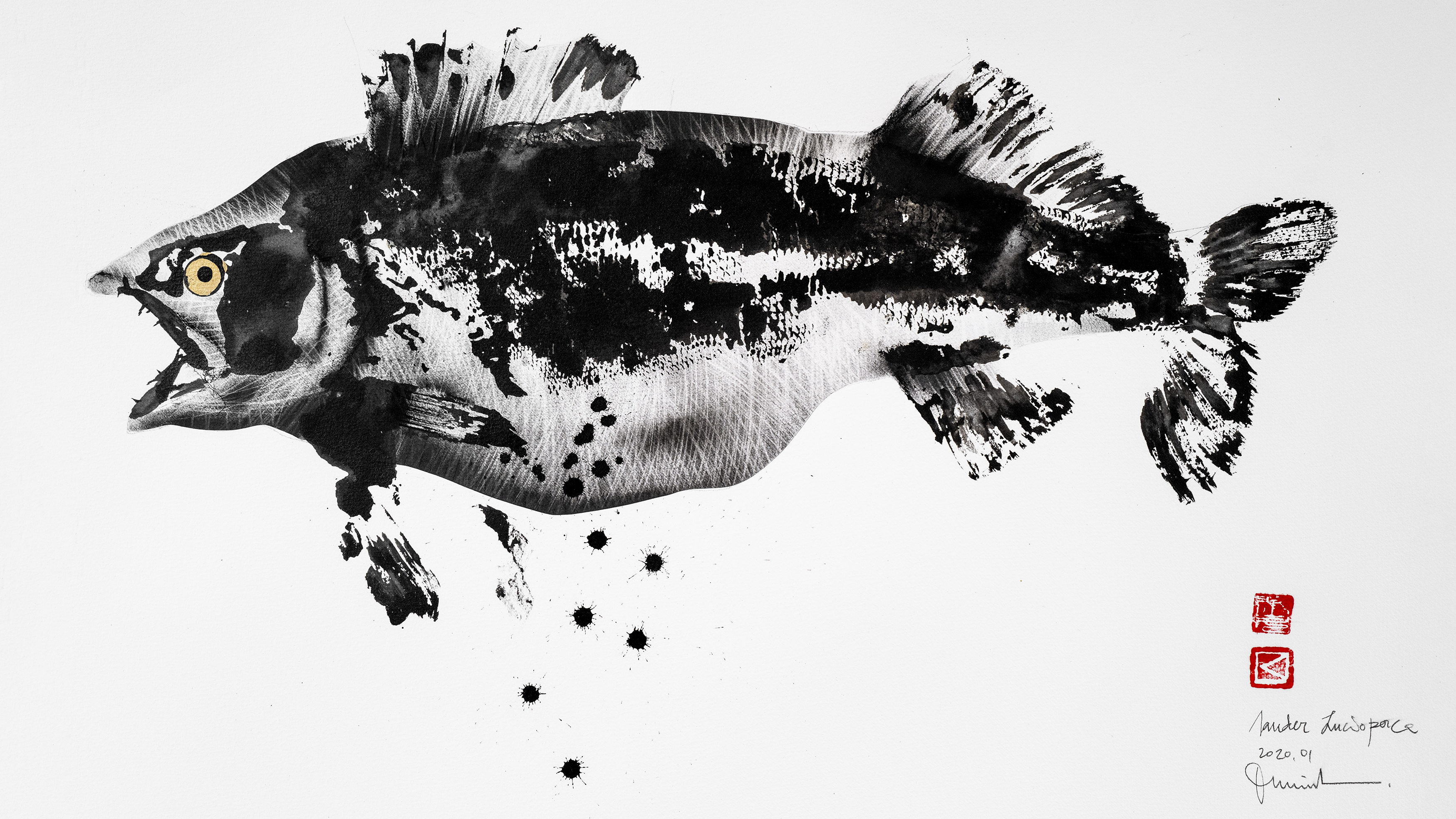


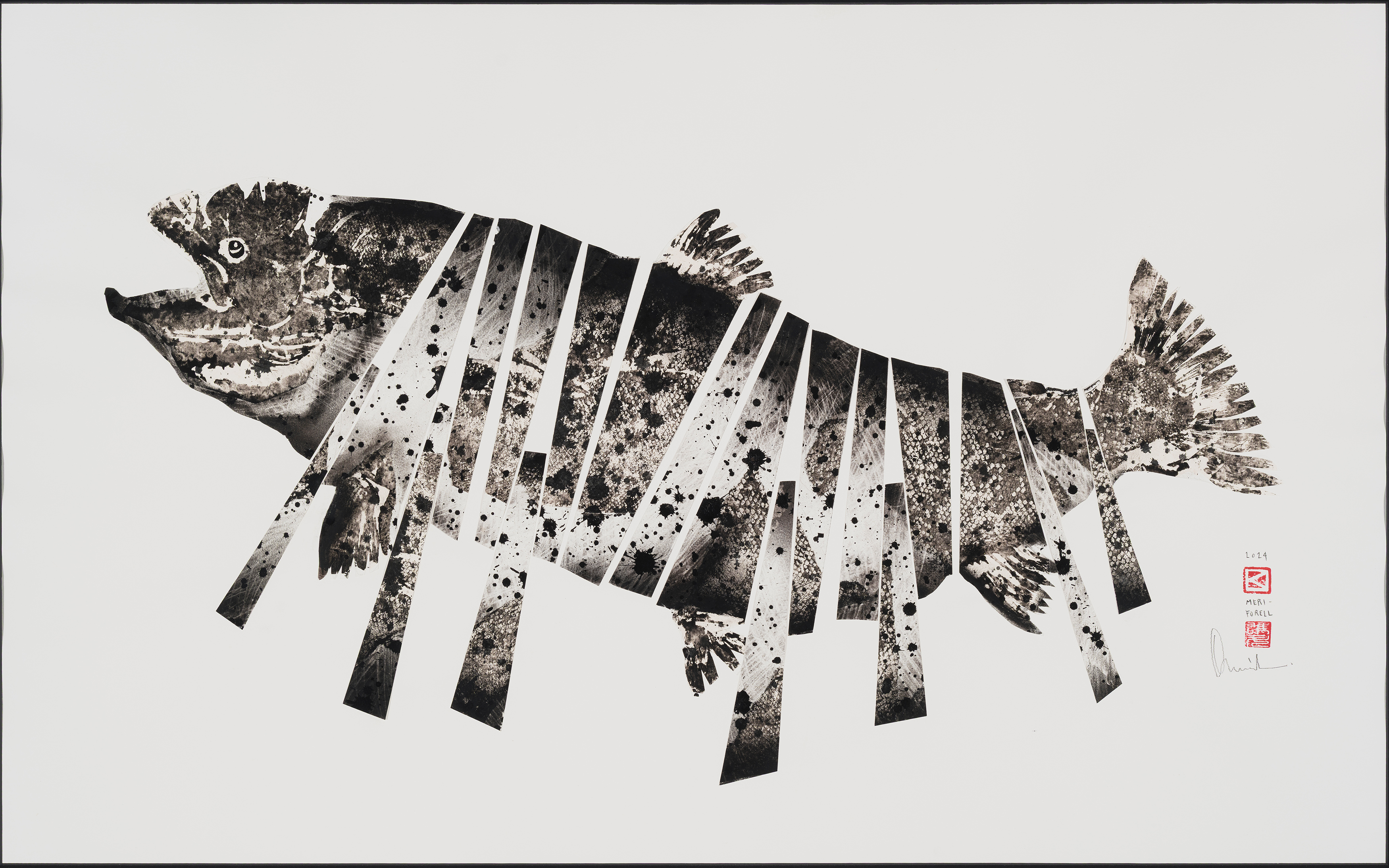











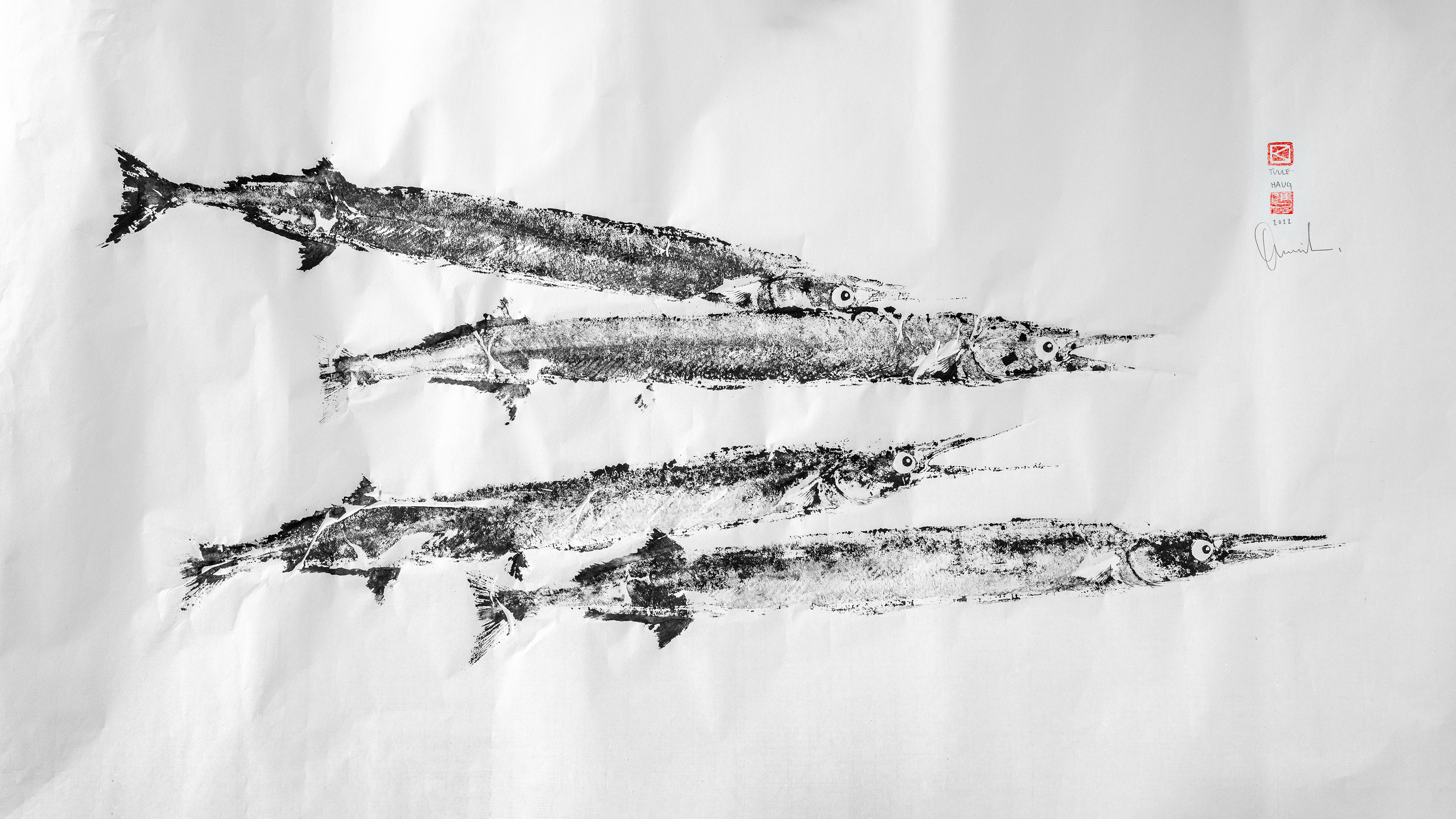
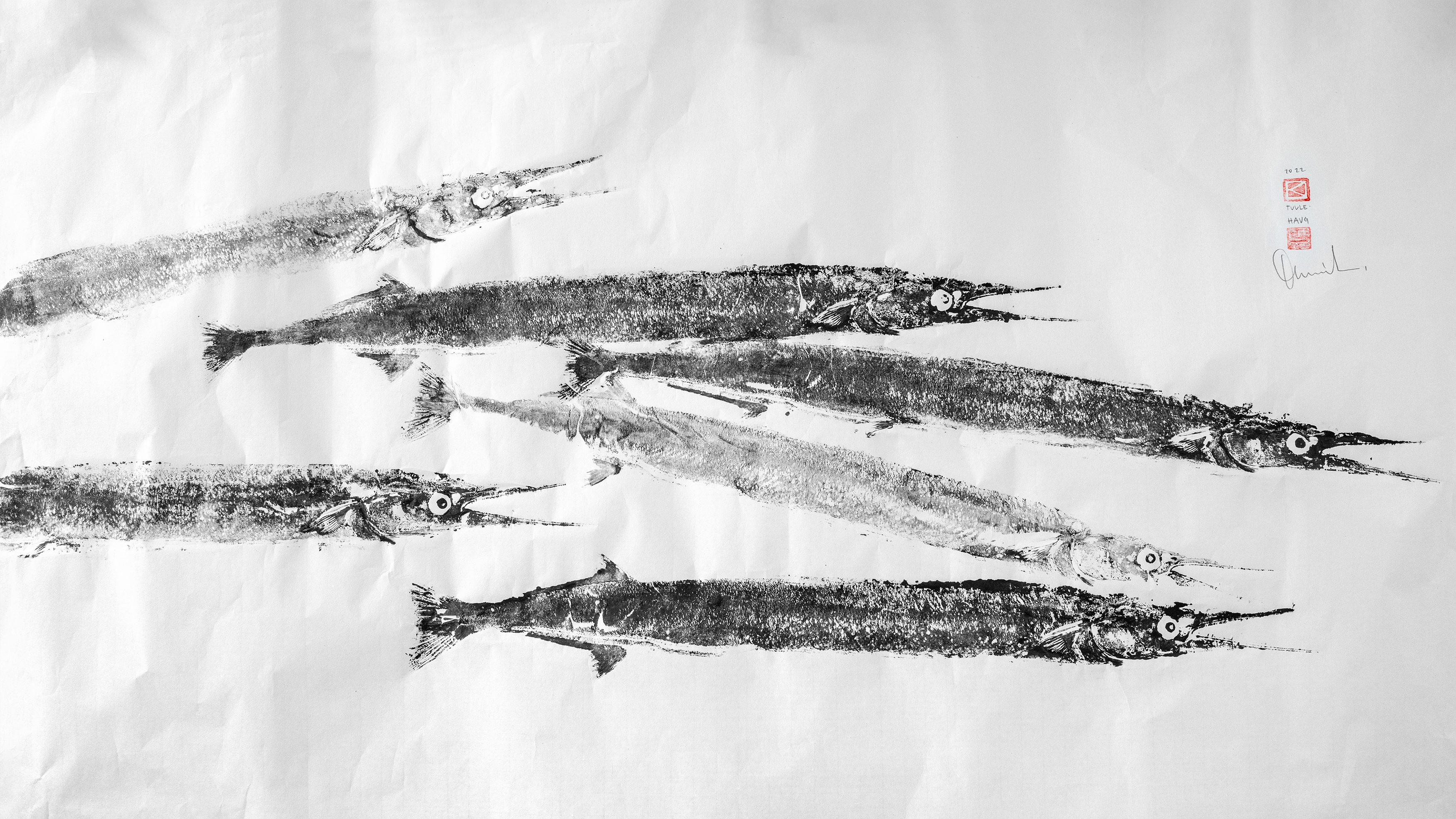
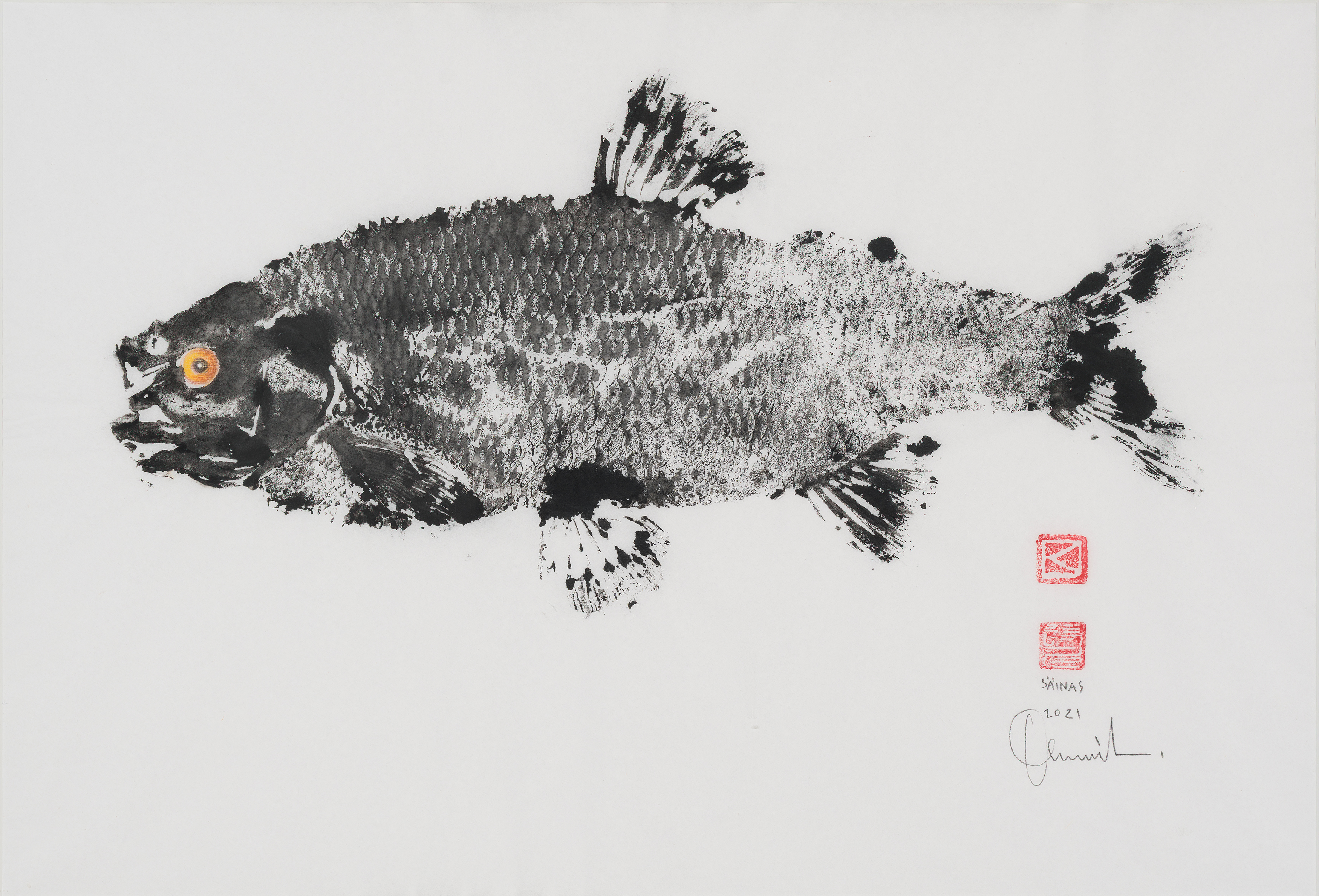

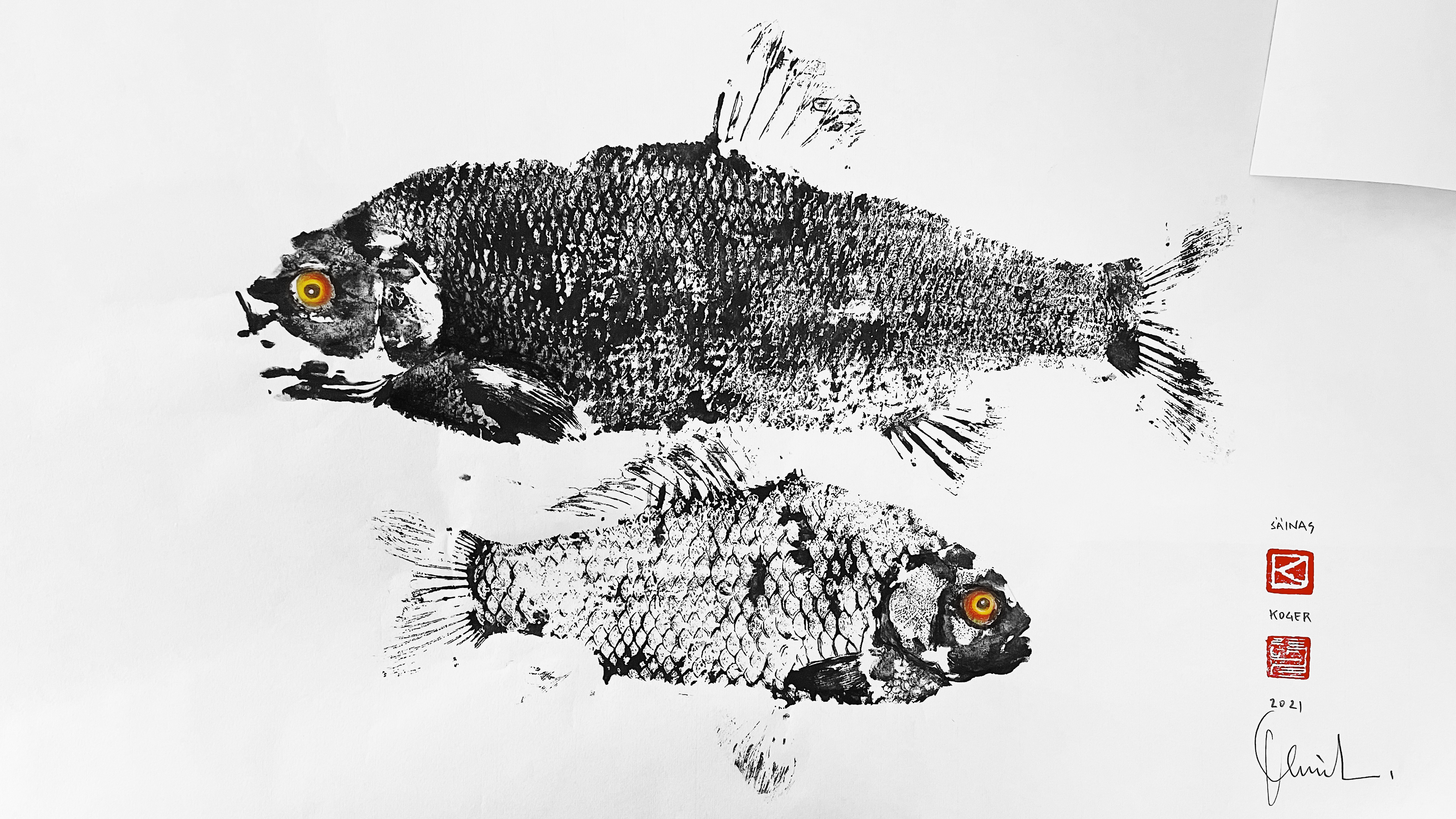









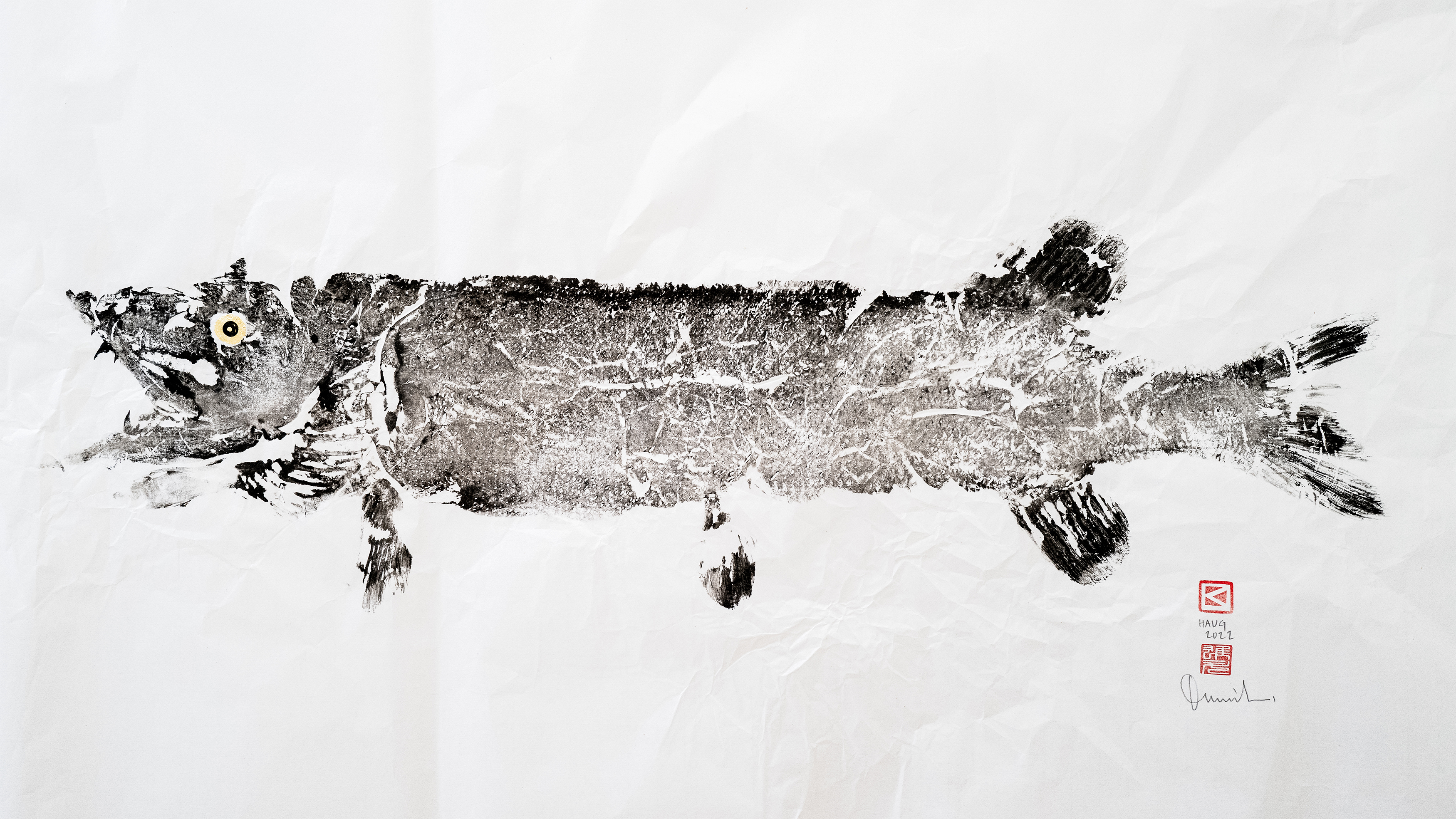
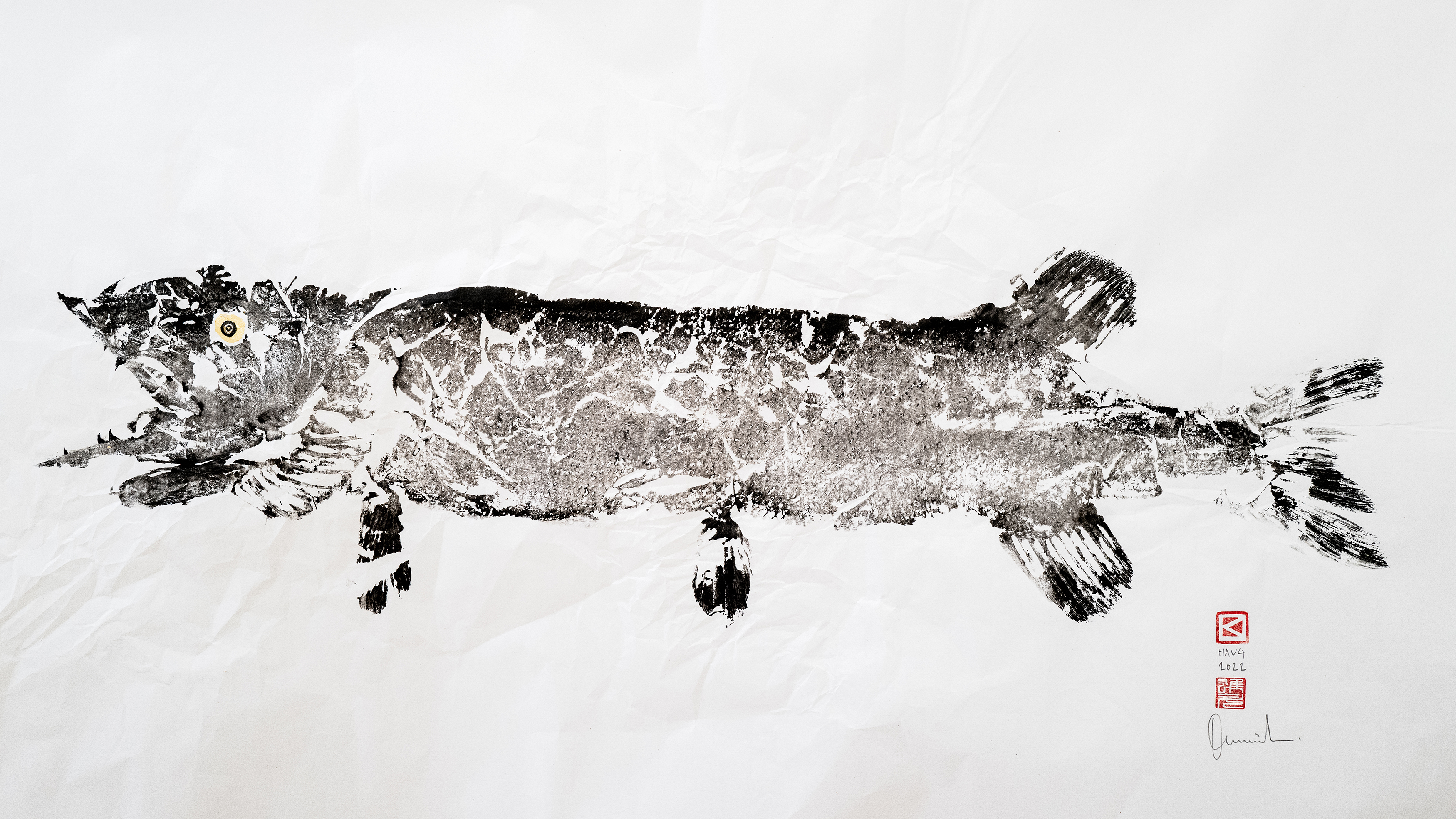












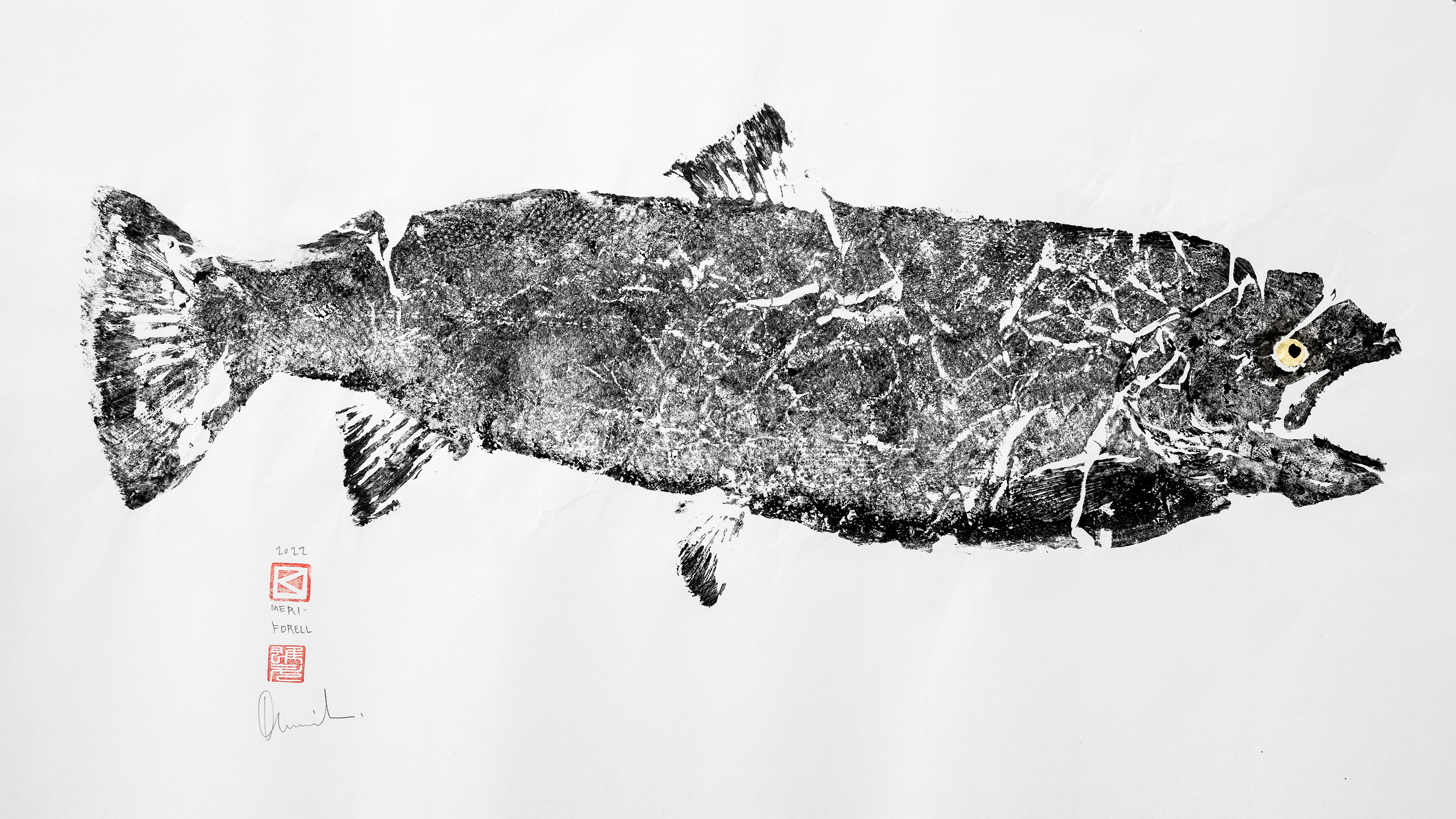

© Ott Kadarik
insta: @kodarik @luidrik @ktarchitects